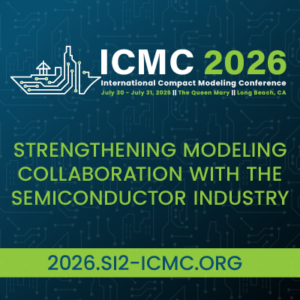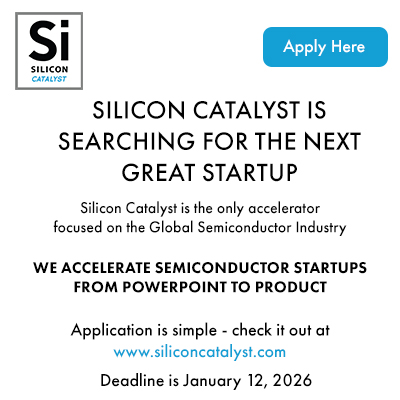
Jay Vleeschhouwer, Managing Director of Software Research at Griffin Securities, is a noted financial analyst who does a yearly presentation on the State of EDA during the Design Automation Conference (DAC). This year was no exception. He and I spent a memorable afternoon discussing the Synopsys-Ansys merger and startups. A condensed version of our talk follows.
Big EDA includes Cadence, Siemens EDA and Synopsys, Ansys and Keysight. Now that the Synopsys-Ansys merger closed, do you see changes in the landscape?
Since this combination occurred, it is the largest Engineering Software company on the planet by revenue and by backlog.
In terms of financial profile, this is by far the largest company in all of Engineering Software, a well over $30-billion industry, including all the parts of that market—AEC, EDA and Technical Software. Synopsys plus Ansys is the largest part of that. The pro-forma backlog is the largest in the industry.
From an operational or strategy point of view, Ansys EDA is roughly a fifth of Ansys’ business, making it the fourth largest EDA company. Combining the largest EDA company with the fourth largest, Synopsys will pick up another roughly three and a half points of market share from Ansys’ EDA.
More broadly, the question is how Synopsys will integrate, employ and leverage the four fifths of Ansys that is not strictly EDA. It’s not Ansoft and Apache, the two entities that mostly comprise Ansys’ EDA, and it ties into the convergence theme.
We pointed out that this is more than $30-billion manifestation of convergence. Keysight, on a smaller scale, is pursuing its strategy for convergence through acquisitions, including last year’s acquisition of ESI, a small French simulation software company. Two pending Keysight acquisitions will be made in the photonics and optical area. Both are conditional upon the close of the acquisition of Ansys, something that the regulators required as a condition of approval.
This will certainly build out the Engineering Software portfolio for Keysight and is complementary to what they’re doing. They, too, speak about multi-physics in the same way that Ansys has been speaking about multi-physics as part of its strategy for years. Of course, Synopsys acquired the largest multi-physics software company on the planet with Ansys. In terms of changing the landscape, that is a function of the four fifths of Ansys that is not EDA, because the one fifth has already been working closely with Synopsys since their 2017 technical integration agreement. That will help smooth the integration, at least in terms of whether their products are integrated.
Beyond that, there’s always the question in any acquisition as to the balance between leaving the operations and the portfolios as they were. In other words, let them continue doing what they were doing if they were doing it well and/or absorbing, integrating and leveraging those portfolios into the buyer’s portfolio.
That roadmap is something that we would be interested in hearing more about in terms of its purely EDA aspects and then the convergence aspects. It will also be interesting to see if they update the initial revenue and cost synergies from SNUG in March 2024. They gave some specific revenue and cost synergies that they foresaw in terms of combined products and cost savings, which would seem to be, on the cost side, achievable.”
Will this make it harder for startups?
It’s always hard for startups in this industry because they have so much to prove when Synopsys, Cadence and Siemens are investing substantial amounts necessary in their portfolios. Opportunities for startups will always be a function of provable, superior performance in critical areas.
One of the interesting things for investors is how much of the technology requirements are foreseeable. The semiconductor roadmap is so well laid out and defined in terms of nodes that you can work backwards to what critical tools will be needed to solve new or upcoming problems. Opportunities are there for startups to correctly identify what those needs are and then be able to prove sufficiently superior performance in benchmarks for engineering groups to adopt a proof-of-concept tool or complementary tool.
The fact that the two largest companies have accumulated so much more share organically and inorganically and cover so much more of the EDA portfolio landscape, makes it’s harder for startups. I wouldn’t want to say it isn’t possible or it’s infeasible, but we know what the benchmarks or conditions for success have to be.”
About Jay Vleeschhouwer
Jay Vleeschhouwer, Managing Director of Software Research at Griffin Securities, has more than 40 years of research analyst experience in the technology sector, including software, semiconductors and computer hardware. Vleeschhouwer does a yearly presentation on the State of EDA during the Design Automation Conference (DAC). The slides can be found at: DAC presentation (June 2025) 2.pdf
Note: The ESD Alliance will host a three-hour design track “The Convergence of Semiconductor Manufacturing and Design” Tuesday, October 7, from 1 p.m. until 4 p.m. during SEMICON West in Phoenix, Ariz.
Also Read:
Scaling 3D IC Technologies – Siemens Hosts a Meeting of the Minds at DAC
Analysis and Exploration of Parasitic Effects
Siemens Proposes Unified Static and Formal Verification with AI
Share this post via:








Quantum Computing Technologies and Challenges